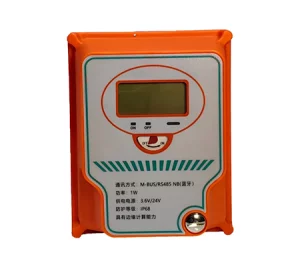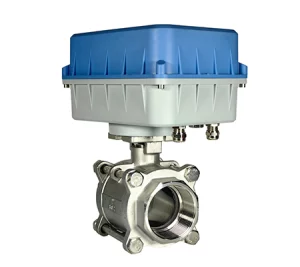Avoid your inquiry is delay response, please enter your WhatsApp/WeChat/Skype along with the message, so we can contact you at the very first time
We will reply you within 24 hours. If for urgent case, please add WhatsApp: +8613188899036, or WeChat: 0531-87968777. Or call 0531-87968777 directly.
* We respect your confidentiality and all information are protected. We will only use your information to respond to your inquiry and will never send unsolicited emails or promotional messages.
Manual valves slow projects, waste energy, and invite human error. Multiply that across a building or plant and the problem grows fast. An electric actuator solves it by giving you precise, remote, automated valve control—no guesswork, no delays.
An electric actuator is a device that uses electric power to open or close the valve and modulate its position with precise control. Inside, an electric motor and gear train convert electricity into torque and movement. You’ll find electric valve actuators on ball, butterfly, gate, and globe valves across HVAC, water, and industrial process systems wherever reliable, low-maintenance automation and integration with a control system are required.

electric actuator valve control
An electric actuator is a device that converts electrical energy into mechanical motion. Inside the enclosure, electric actuators convert the rotation of an electric motor into usable torque through gears. That torque turns or pushes the stem so the unit can operate the valve, driving the opening and closing of valves to an open or closed or finely modulated position.
This section is a quick guide to electric motion:
As a smart valve manufacturing plant, we’ve seen how actuators are designed to survive damp basements, boiler rooms, rooftops, and corrosive industrial zones. Electric valve actuators are becoming the default in digital buildings because actuators can be used anywhere power and network cables reach.

How does an electric actuator work on a valve?
There are different types of valves and types of electric valve actuators to match them. The type of actuator defines how force is applied:
A handy way to decide is to start with the type of valve your process uses, then match the movement style and torque requirement. Actuated valves often mix and match—valves such as gate or globe might still use clever gearboxes and a modulating actuator to hit setpoints.
Note: Valves use an electric motor in these systems, so heat dissipation, duty cycle, and electric actuator must sizing rules matter.
Choosing an electric actuator can feel tricky. Here’s what we look at when we help clients selecting an actuator or selecting an electric model:
We also compare a manual valve cost plus labor vs. a motorized valves package. For large buildings, valves are commonly used in hundreds—automation saves man-hours.
Both electric valves and pneumatic actuators move valves. Which wins?
Electric
Pneumatic actuators
If your facility already runs air tools and cylinders, pneumatic actuators make sense. Otherwise, a modern BAS (Building Automation System) or PLC with power and data favors electrically actuated valves. Electrically actuated valves simplify wiring and maintenance, especially in remote nodes.
The valve and actuator must fit like a glove. Valves also come with square stems, ISO flanges, or custom couplings. Here’s a quick view:
| Valve Family | Motion Needed | Typical Electric Actuator Style | Notes |
|---|---|---|---|
| Ball valve | 90° quarter-turn | Compact rotary | Clean bore, low pressure drop. |
| Butterfly valves | 90° quarter-turn | Rotary with high torque | Light disc, but big diameter. |
| Gate valves | Multi-turn | Multi-turn electric actuators | Wedge needs many turns. |
| Globe valves | Linear stroke | Linear or gear-driven multi-turn | Great for throttling. |
| Plug valves | 90° turn | Rotary | Chemical duty designs. |
| Diaphragm valves | Linear stroke | Linear | Sanitary service. |
| Pinch valves | Linear squeeze | Linear | Slurries and abrasive fluids. |
| Stem valves | Linear or multi-turn | Depends on stem travel | Verify travel length. |
Remember: actuator for your application should cover worst-case differential pressure. Valves such as gate can stick; an actuator is used to “crack” them free.
Installation and maintenance of electric actuators are simpler than many think, but details matter:
Once in place, electric valve actuators are used with minimal attention—just periodic cycling and alarm checks. Valves are often used in tough loops; catch issues early to avoid downtime.
Modern plants demand data. Control the opening and closing precisely and log feedback. Here’s how:
When actuator work pairs with a digital BAS, you cut truck rolls. Electric actuators come with manuals, but we ship configuration guides and remote support as well.
Before issuing a PO, check:
We adhere to ISA/IEC standards and publish torque curves so actuator needs are transparent. Valves are used in life-safety loops—no shortcuts.
A district-cooling plant ran 400+ manual valve points. Techs walked miles daily to open the valve or tweak setpoints. We replaced them with motorized valves, many actuated ball valves, tied to an RS485 control system. Results:
In a small food and beverage plant, upgrading to electric valves created better batch repeatability. The actuator is used to hit exact flows, eliminating guesswork. The ROI came from labor saved and reduced scrap.
Initial prices can be similar across technologies, but look long term:
Thus, valves are often more economical when electrified. For brownfield sites, the right electric choice might be retrofitting existing valves with clamp-on drives. Actuator may be the small change that delivers a big win.
To help searchers and specifiers, here is a plain-language list that folds in critical terms (and yes, we use them naturally throughout):
How does an electric actuator differ from a pneumatic actuator?
Electric units rely on an electric motor and gears, while pneumatic actuators use compressed air. Electric is cleaner and easier to network; pneumatic is faster and safer in explosive zones.
What if my valve requires very high torque?
Then you size up the gearbox or move to a multi-turn electric actuators platform. We publish actuator output torque charts so you can match load to motor.
Can I retrofit an existing manual valve?
Yes. Many kits let you mount an actuator on a manual valve. Just confirm stem size, voltage, enclosure rating, and whether you need a limit switch or feedback signal.
Are electric valve actuators suitable for food and beverage plants?
Absolutely. Specify stainless housings or coatings, and ensure washdown ratings. Valves are used there for steam, CIP lines, and syrup dosing—precise control helps.
Do valves use an electric motor in every case?
Electrically actuated systems do. Some solenoid valve designs snap open/closed instantly, but most larger electric valve actuator packages use geared motors to modulate.
What about maintenance?
Routine checks include verifying wiring, cycling the valve operation, inspecting seals within the actuator, and confirming limit switch positions. That’s it—no air leaks to chase.
Need help specifying the right electric solution? Let’s talk torque, travel, and timelines—our engineering team answers fast.

| Feature | Electric Actuator | Pneumatic Actuator |
|---|---|---|
| Energy Source | Electricity (24V, 110V, 220V) | Compressed Air |
| Control Signals | Analog, Digital, Modbus, BACnet | Pneumatic, Digital, Manual |
| Speed | Medium | Fast |
| Best For | Automation, precise control | Fast response, safety zones |
| Maintenance | Low | Moderate |
| Typical Applications | HVAC, Water, Oil & Gas, Industry | Refineries, Chemical, Explosive areas |